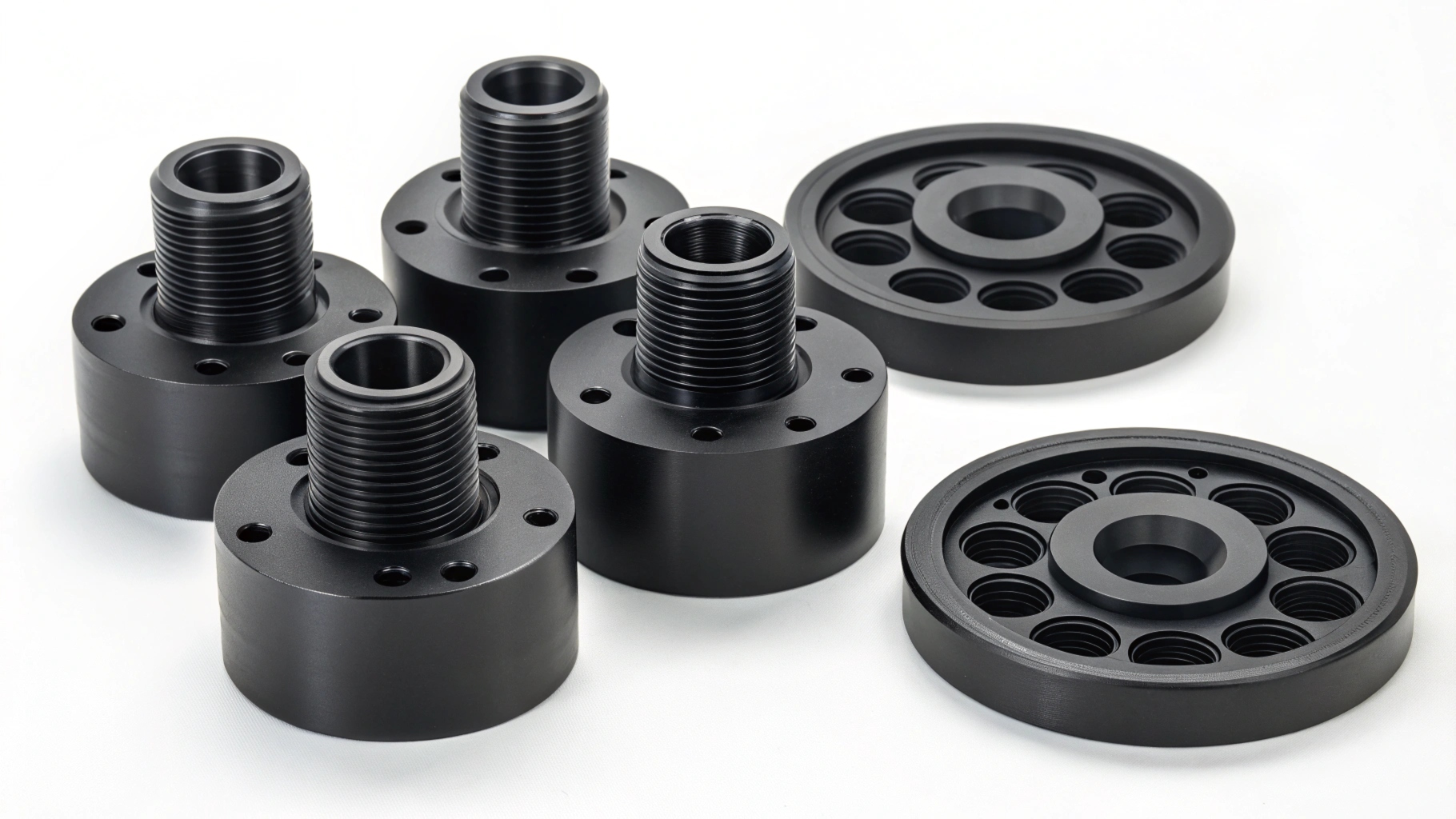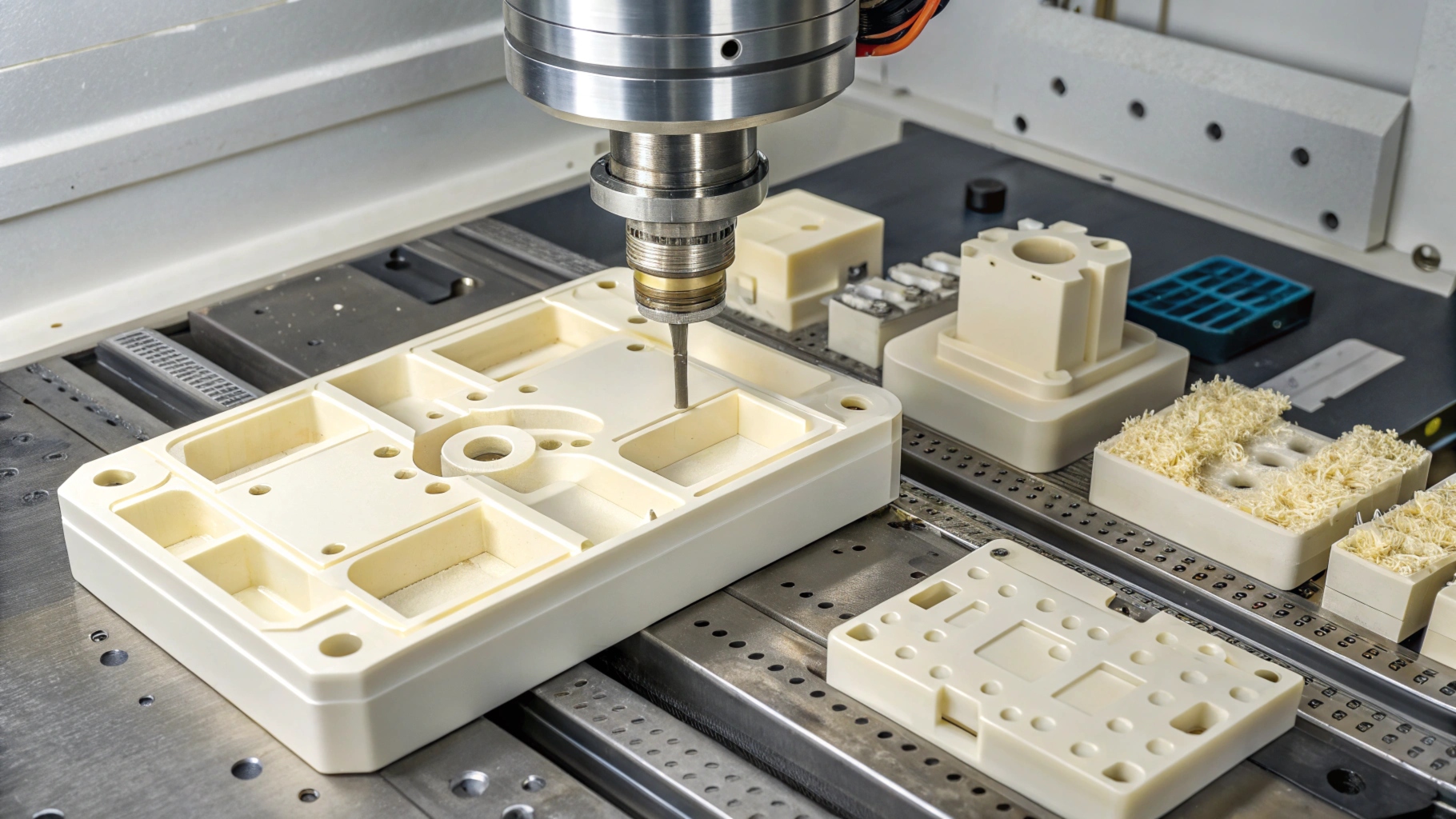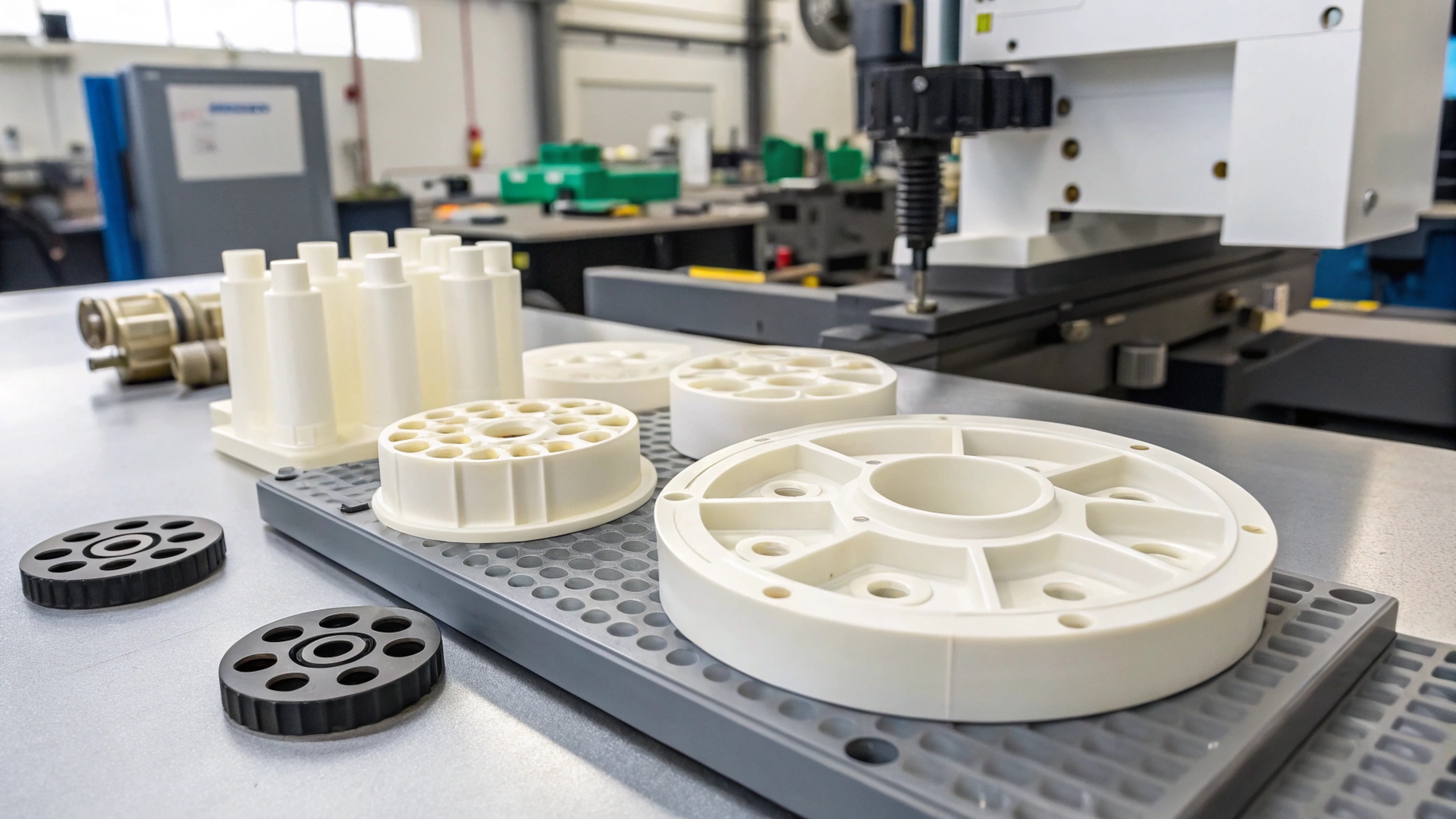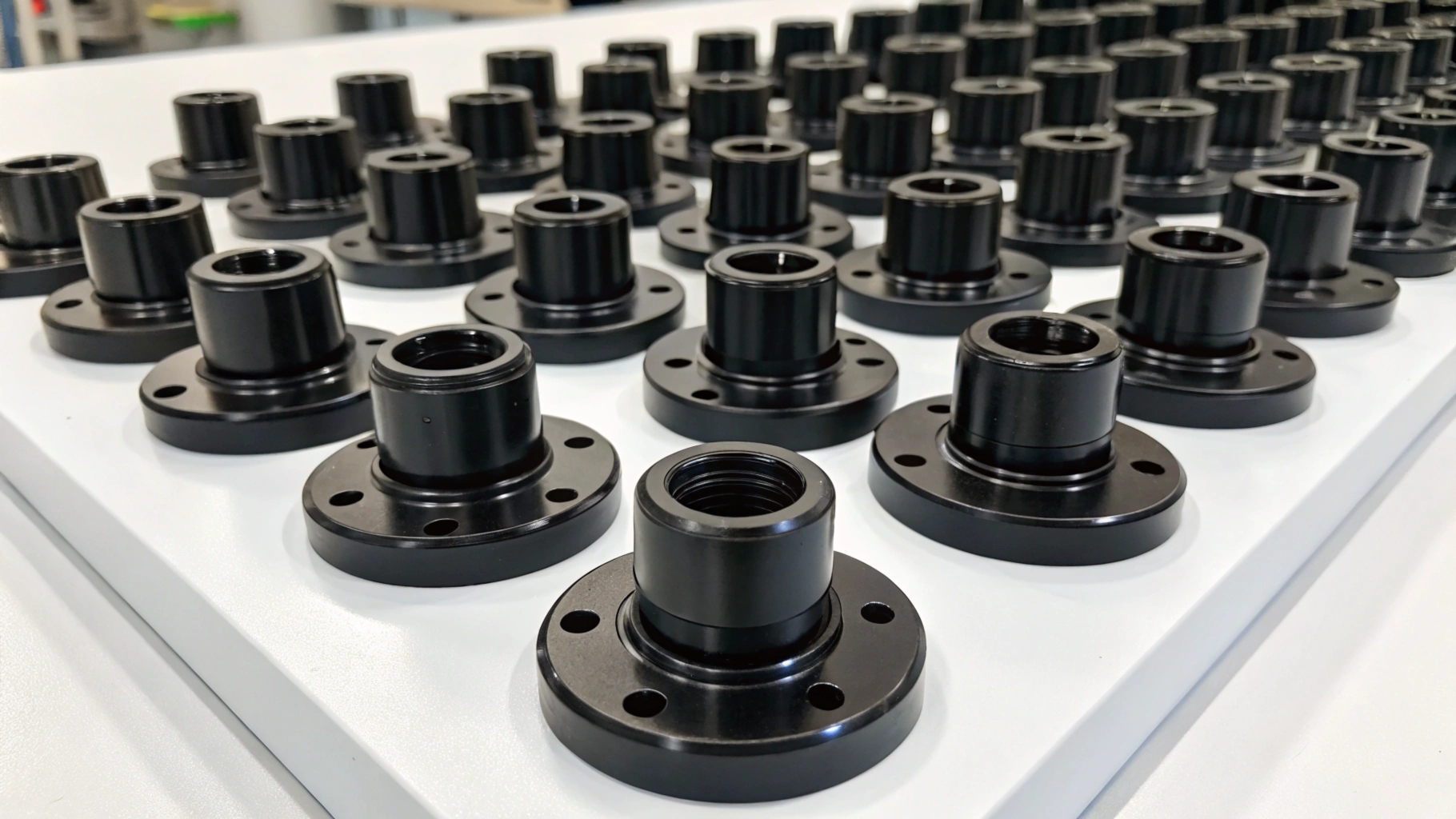
CNC machining is a versatile manufacturing process applicable to a variety of materials, each with unique characteristics.
Understanding the key differences between machining plastics and metals is crucial for selecting the right approach for your CNC project.
In this article, we will explore the differences in material properties, tooling techniques, challenges faced during machining, and how to choose the right material for your project.
Key Differences Between Machining Plastics and Metals
Machining plastics and metals involves several fundamental differences due to their unique material properties.
These differences impact the choice of tools, machining strategies, and overall processing outcomes.

Comparison of Key Factors
| Factor | Plastics | Metals |
|---|---|---|
| Density | Lower density, lighter | Higher density, heavier |
| Machinability1 | Generally easier to cut | Harder to machine |
| Thermal Conductivity2 | Poor thermal conductivity | Excellent thermal conductivity |
| Strength | Typically less strength than metals | High strength and toughness |
| Surface Finish3 | Smooth finishes are achievable | High-quality finishes possible |
Each type of material presents its own set of advantages and challenges that affect the machining process.
Material Properties: How Plastics and Metals Behave in CNC Machining
Understanding how plastics and metals behave during machining helps in planning the correct approach for each material.

Plastics
Plastics are lightweight and can be easier to machine, but their machining behavior varies significantly based on the type of plastic used.
Common characteristics include:
- Thermal Expansion4: Plastics can expand considerably when heated, which can lead to dimensional changes.
- Softness: Most plastics are relatively soft, which allows for faster processing speeds but requires careful management of cutting conditions.
- Brittleness: Certain plastics may be brittle and can chip or crack if the cutting parameters are too aggressive.
Metals
Metals have significantly different properties that impact the machining process:
Key characteristics include:
- Strength and Hardness5: Different metals possess varying levels of strength and hardness, which can affect cutting speeds and tool wear.
- Temperature Sensitivity: Metals may change properties when heated, which can affect tools and tolerances.
- Tendency to Work-Harden6: Some metals, like aluminum or titanium, can work-harden, necessitating the use of specific cutting tools and strategies.
| Material Type | Properties | Machining Considerations |
|---|---|---|
| Plastics | Lightweight, easy to cut | Manage thermal expansion and brittleness |
| Metals | Strong, hard | Pay attention to heat management and tool wear |
Understanding these behaviors helps machinists select appropriate parameters and tools for effective machining.
Tooling and Cutting Techniques for Plastics vs. Metals
The tooling and cutting techniques for plastics and metals vary significantly due to their distinct material characteristics.

Tooling for Plastics
When machining plastics, particular considerations must be taken into account to achieve optimal results:
- Tool Material: Carbide tools are common due to their hardness and resistance to wear.
- Cutting Techniques: Tools with sharp edges should be used to minimize the risk of chipping.
- Processing Speed: Higher cutting speeds are often feasible for plastics, but it is essential to manage heat to prevent melting.
Common Tooling Techniques:
- End Mills: Often used for flat surfaces and contours.
- Drills: Specialized drills designed for plastics can create precise holes without causing cracks.
Tooling for Metals
Machining metals typically requires more robust tooling and different techniques:
- Tool Material7: High-speed steel (HSS) and carbide tools are commonly employed.
- Cutting Techniques8: Tools with a more robust edge are critical to withstand the hardness of metals.
- Cooling: The use of coolants is essential to dissipate heat during machining and prolong tool life.
Common Tooling Techniques:
- Face Mills: Used for producing flat surfaces and achieving dimensional accuracy.
- Drills: High-speed drills are necessary for creating holes in metals, with coolants often applied.
| Material Type | Tooling Requirements | Common Tools |
|---|---|---|
| Plastics | Sharp edges, carbide tools | End mills, drills |
| Metals | Harder edges, coolant application | Face mills, drills |
Selecting the right tooling based on the material ensures quality finishes and accuracy in machining.
Challenges and Solutions in Machining Each Material
CNC machining of plastics and metals comes with unique challenges that require tailored solutions.

Challenges with Plastics
-
Heat Management9: Since plastics can melt or deform at high temperatures, managing heat is essential.
- Solution: Use cutting tools with lower friction and maintain optimal cutting speeds to dissipate heat.
-
Surface Finish: Achieving a smooth surface finish can be challenging due to the material's tendency to chip.
- Solution: Employ a finishing tool approach and adjust feeds and speeds based on the type of plastic.
-
Brittleness: Some plastics are prone to chipping or cracking during machining.
- Solution: Utilize gradual feeds and avoid abrupt tool movements to minimize the risk of disastrous cuts.
Challenges with Metals
-
Tool Wear10: Tools tend to wear faster when machining hard materials.
- Solution: Invest in high-quality, wear-resistant tools and consider using coatings for additional durability.
-
Thermal Effects: Heat generated from machining can affect the mechanical properties of metals.
- Solution: Employ adequate cooling systems and choose cutting speeds that manage thermal build-up effectively.
-
Complex Geometries: Metals may be challenging to machine into intricate shapes due to their density and hardness.
- Solution: Use advanced CNC techniques such as multi-axis machining to accommodate complex designs.
| Material Type | Challenges | Solutions |
|---|---|---|
| Plastics | Heat management, brittleness | Lower friction tools, gradual feeds |
| Metals | Tool wear, thermal effects | High-quality tools, cooling systems |
By understanding these challenges, machinists can implement effective solutions to optimize machining processes.
Choosing the Right Material for Your CNC Project
Selecting the right material for your CNC project is crucial to achieving desired outcomes.

The choice depends on the specific requirements of the intended application, such as strength, weight, and cost.
Considerations for Material Selection
-
Application Requirements: Understand the functional requirements and constraints of your application.
- If strength and durability are critical, metals may be a better choice. For lightweight structures or non-load-bearing parts, plastics could be suitable.
-
Weight Considerations: Evaluate if weight is a concern, especially in industries like automotive and aerospace.
- Plastics are often favored for applications where weight savings are essential, whereas metals are suitable for components requiring increased strength.
-
Cost: Assess the budget for the project.
- Generally, plastics are less expensive to machine and can offer substantial savings for large production runs.
-
Environmental Factors: Consider the environment in which the part will be used.
- Plastics may not perform well in high temperatures or corrosive environments compared to metals.
| Factor | Plastics | Metals |
|---|---|---|
| Application Requirements | Good for lightweight, low-stress parts | Better for high-stress, structural applications |
| Weight Considerations | Lightweight, ideal for aviation and automotive | Heavier, suitable for strength-critical parts |
| Cost | Generally lower machining costs | Potentially higher due to tool wear and machine time |
| Environmental Suitability | Not ideal for high-temp or corrosive environments | Excellent for diverse environments, including high temp |
Evaluating these factors allows you to make an informed decision about the best material for your CNC machining project.
Conclusion
CNC machining offers unique advantages and challenges when working with plastics and metals. Understanding the key differences in material properties, tooling, challenges, and selection criteria is essential for successful project outcomes. By aligning the right material with project requirements, manufacturers can optimize processes and achieve high-quality results.
-
Understanding machinability differences can help optimize machining processes for both materials, enhancing efficiency and quality. ↩
-
Exploring thermal conductivity differences is crucial for selecting materials in applications where heat management is essential. ↩
-
Learning about surface finish capabilities can guide material selection for aesthetic and functional requirements in manufacturing. ↩
-
Exploring this resource will deepen your understanding of how thermal expansion impacts machining processes, ensuring better results. ↩
-
This link will provide insights into the relationship between metal properties and machining efficiency, crucial for optimizing your workflow. ↩
-
Understanding work-hardening is vital for selecting the right tools and techniques, enhancing your machining effectiveness. ↩
-
Understanding tool materials is crucial for achieving optimal machining results in both plastics and metals. ↩
-
Exploring effective cutting techniques can enhance machining efficiency and product quality for various materials. ↩
-
Explore this resource to learn about essential heat management techniques that can enhance your CNC machining processes for plastics. ↩
-
Discover advanced methods to reduce tool wear in metal machining, ensuring longer tool life and better performance. ↩

